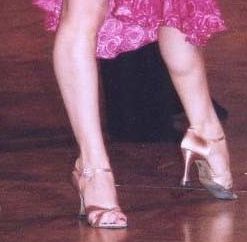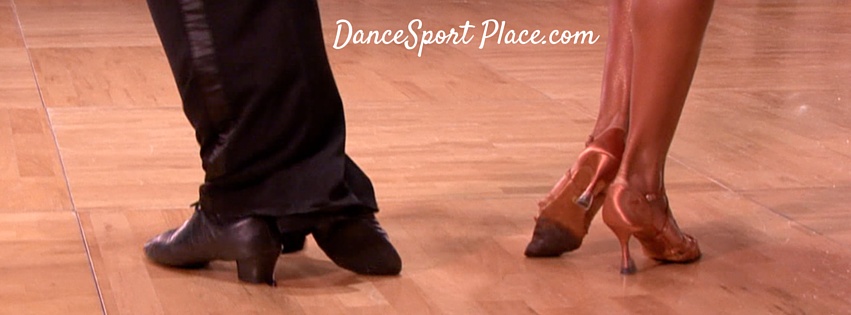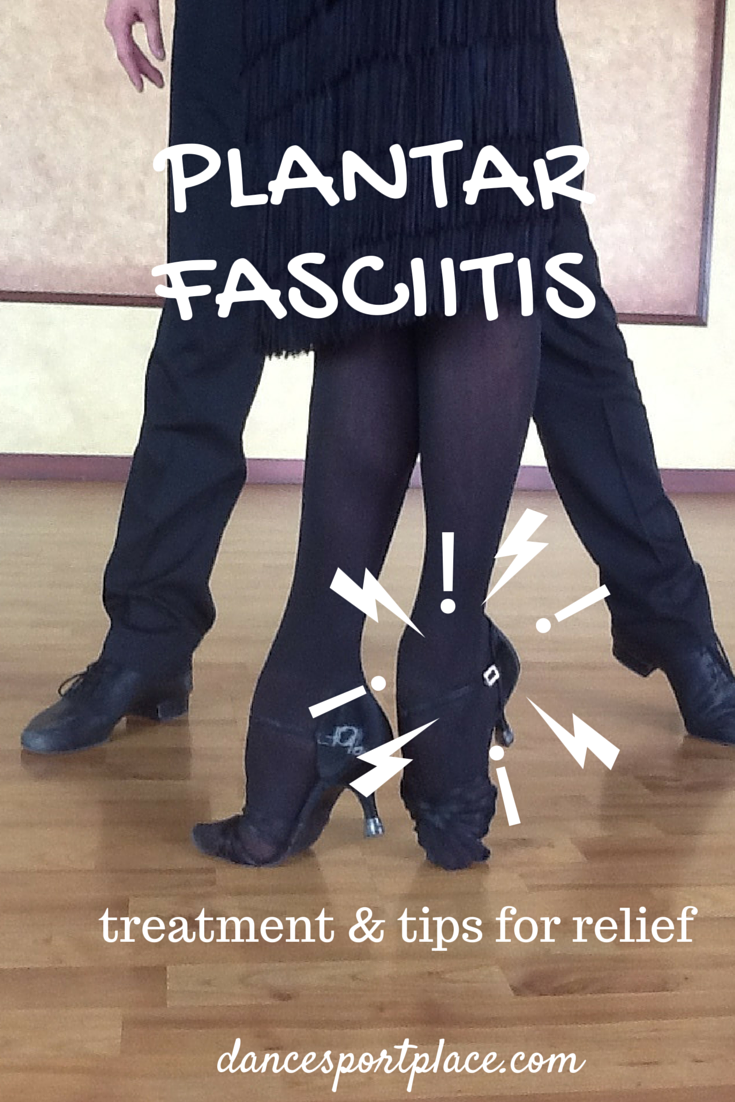When you’re a dancer (or any athlete), the warning signs of an injury often get ignored. We tend to avoid even getting stuff check out by the doc because we all know how that goes:
You want me to rest for 4-6 weeks? I don’t think so! Nothing that a good dose of ice, Tiger Balm and Advil won’t take care of.
But persistent and/or recurring discomfort is worthy of a second look, as EARLY DETECTION of an injury is the key to preventing it from becoming a serious issue.
And you certainly wouldn’t want to be left sitting NEXT to the floor instead of dancing on it.
Worse yet, if your LIVELIHOOD depends on your dancing, being sidelined with an injury can be a real blow to your financial health as well.
If you’ve been diagnosed with plantar fasciitis, treatment is critical to getting you back on your feet, and back to work.
Erik was recently diagnosed with Plantar Fasciitis in both feet. According to the Mayo Clinic website it is defined as:
Plantar fasciitis (PLAN-tur fas-e-I-tis) is one of the most common causes of heel pain. It involves pain and inflammation of a thick band of tissue, called the plantar fascia, which runs across the bottom of your foot — connecting your heel bone to your toes.
Athletes (particularly dancers and runners) are more susceptible to this type of injury.
Other contributing factors that can lead to the problem particularly in dancers are:
- inadequate support in shoes
- having high arches, wearing high heels
- wearing old shoes (which have lost their support)
- not stretching properly or enough
- ignoring the problem
- All dancers fit into at least one of these risk factors!
Erik had noticed tightening in his feet a few months back, but just chalked it to his lack of stretching.
Until one night while simply teaching as usual and an excruciating sharp pain forced him to stop.
Of course, being a dancer, his first course of action was ice, Aleve and resting it in an elevated position. (dancer’s orders! 🙂
The next week, he did compete on it without too much trouble, but the day after the comp, he was off his feet again.
This time he went to the podiatrist and received the diagnosis of plantar fasciitis in not only the painful foot, but the OTHER one too.
If you’re a dance teacher, right now you’ve probably already mouthed the exact word that Erik said when he found out and that I said when he told me. (Hint: Starts with “S” ends with “T”!)
Detecting the other foot early on was fortunate timing before the problem worsened to the point of excruciating pain in both feet.
Diagnosis of the problem was important, because we could then take steps to improve it. (Moral: go to the doctor, Dancer! Ignoring the problem only makes it worse.)
Since we dancers are particularly susceptible to plantar fasciitis, check out some of these risk factors…
 High Heels:
High Heels:
Since both male and female ballroom dancers use shoes with high heels, this can be an issue.
For ladies, you might consider alternating your heels when you’re practicing for practice shoes that have a lower heel.
When you’re not at the studio, give yourself a break by wearing comfortable supportive running shoes or flats, but avoid being barefoot and flip flops.
Male dancers using heels for Latin dancing might also consider some practice and/or teaching time in lower heeled shoes or jazz shoes, provided they offer good support.
 Old Shoes:
Old Shoes:
Sure we all fall in love with that BROKE DOWN pair of shoes that feels like part of your own foot and throwing them out feels like you’re tossing your best buddy in the trash.
For dancers who are holding on to their worn out shoes because they are a good luck charm, go ahead and keep them in your bag as a backup, but get yourself some new shoes (and wear them!) that are fresh and will provide you with better support.
Alternatively, some dancers may be holding back on new shoes for financial reasons, as dance shoes can be rather pricey.
But when you factor in the cost of future medical bills and orthotics, you should consider getting the new pair of shoes as an investment in your health.
Inadequate shoe support:
Over the years, the engineering of dance shoes has improved significantly.
Shoe companies are really keying into the fact that dancers are on their feet for long periods of time and the level of foot support needs to meet the requirement of dancers.
However, when you compare the technology of the innovative sports shoes to a ballroom dance shoe, there is really NO COMPARISON.
Millions of dollars have been poured into research and development of sports shoes to achieve the highest levels of comfort, practicality and efficiency.
And for dance shoes….well, you’re going to need at least some over the counter shoe inserts.
Both arch supports and heel pads can help reduce the STRESS placed on the foot and therefore aid in the prevention of plantar fasciitis.
This is an economical simple step to take in the care of your feet.
If you have plantar fasciitis already, you’ll need to consider the more costly, custom orthotics.
A mold will be taken of your foot and an orthotic shoe insert created especially for your foot. You’ll wear these custom orthotics in both your dance shoes and everyday shoes.
Overworked:
The determined dancer can hardly be convinced to take a BREAK from practicing, and if you’re a PROFESSIONAL who also relies on your dancing for your living, you may not get much of a chance to allow your body to recover from overwork; that is until an injury stops you cold.
So, as hard as it is to take a break, keep in mind that an ounce of prevention is worth a pound of cure.
DON’T ignore foot (or any other) pain, especially if it comes and goes (the fact that is “goes” does not mean it’s going away!), because it’s often a warning sign that an IMMINENT injury is on the way!
Take a proactive stance and get chronic and recurring pains properly diagnosed so you can effectively stave off a problem before it seriously sidelines you.
Additional remedies:
• Ice: reduces inflammation and swelling. A good tip is to freeze a filled water bottle and once frozen, roll your foot over it.
Don’t ice for more than about 15 minutes.
• Essential Oils: it’s best to avoid overusing anti-inflammatories and pain meds. One safe alternative are essential oils.
Essential oils can reduce pain and swelling quickly, without side effects. Look for a high quality oil, like those from doTerra, which are certified pure therapeutic grade.
I recommend their oil blend Deep Blue, which penetrates deep into affected area. Order Deep Blue online right here.
• Over the counter anti-inflammatories: be sure to read and follow the dosage instructions to reduce inflammation and pain
• Night splints: keeps your foot in a flexed position during sleep to lengthen and stretch the tendons. Not the most comfortable contraption, but helpful.
• Rest: the remedy no dancer wants to hear, but a NECESSITY for relief and full recovery. Stay off your feet and elevate them.
Think of a few days off now as an exchange for many future days you’ll be able to dance, pain-free.
• Taping: properly taping the foot provides support and allows the foot to rest while it is healing by taking stress off of the tender area.
Watch the video here for a taping technique for plantar fasciitis.
Stretching:
As ballroom dancers, most movements require the feet to be pressing into the floor or pointing.
But it is not often that the feet get a chance to stretch the other way by actively flexing.
And as previously mentioned, wearing elevated heels SHORTENS the Achilles tendon in the calf and keeps the foot at a more pointed angle, thus also not allowing flexion.
Because of this, it is important to practice stretches before and after your dancing that will work the Achilles tendon in the back of the calf and the feet. A few simple exercise to try are:
- Runner’s stretch:
Stand a few feet away from a wall, place your hands on the wall and you’ll be leaning forward.
Move one foot closer to the wall and bend your knee, while keeping the back leg straight. Alternate with the other leg.
- Heel drops:
If you have very tight calves, you can work your way up increasing the height that you are dropping your heels as your flexibility improves.
To start with a very small elevation, stand next to a support (wall, chair, sofa back) and place a sturdy thick book on the floor. Stand on the book with your heels hanging off the edge of the book.
Your heels will now be lower than the balls of your feet, thus stretching your tendons.
Increase the stretch as you improve with higher platforms, such as a stair.
- Downward Facing Dog:
A great yoga pose that really works to stretch the back of the calves and heels.
Stand with feet together and reach to your toes, placing your hands on the floor. With your hands on the floor, move your feet back and about hip distance apart.
You should be making the shape of a triangle with your bottom the highest point towards the ceiling. In this position, try to press the heels to the floor.
You can also “bicycle” your feet, alternating bending and straightening the knees.
- Theraband:
Start with a lightweight Theraband (resistance strap) and place the band under the ball of your foot.
Hold both ends of the band and gently stretch as you flex your foot.
Get Your Groove On–Stay Healthy!
Taking care of your legs and feet is the way to prevent painful Plantar Fasciitis.
If you’re already experiencing problems, DON’T WAIT to visit your podiatrist for expert advice on treatment specifically for your situation.
Take care of yourself and so you can keep dancing!
Disclaimer: These statements have not been evaluated by the Food and Drug Administration. Any product mentioned is not intended to diagnose, treat, cure, or prevent disease. The information on this website is not intended to provide medical advice. Always seek advice from a medical professional.
- Write your Dance: Improve your dancing through journaling - November 12, 2019
- The Difference Between Oversway and Throwaway: Ballroom Video Preview - June 8, 2018
- Principles of Movement: Ballroom Basics Video - September 21, 2016








RE: Plantar fasciitis AND Ironman is easy compared to professional dance.
Hi Melissa,
My collaborator in the treatment of plantar fasciitis is a professional dancer. We work to fix people’s plantar fasciitis, through movement. We’ve fixed a few, based on a short video of them standing and walking.
Thought you might be interested in our efforts. It’s all laid out in my blog (Athlete With Stent), on this page, and related posts:
http://athletewithstent.com/chronic-plantar-fasciitis-treatment-guide/
I can only say, based on working with Rebecca for several years,
Cheers,
Kevin aka FitOldDog
PS If you’re interested in a guest post, just let me know.
I have plantar fasciitis at age 53. I’m in retail sales and stand on my feet 4-7 hours daily plus I’m in dance class for only 1 day for 2 hours. Injections have helped 3 times a year, rest and ice is the BEST!!!
Hi Carolyn. That is a lot of stress of the feet, for sure! If you haven’t tried night splints yet, I recommend it, as mentioned in the article. Also, essential oils have made a huge improvement for my husband and others I know with plantar fasciitis. And yes, rest and ice are so beneficial! Be well and happy dancing!